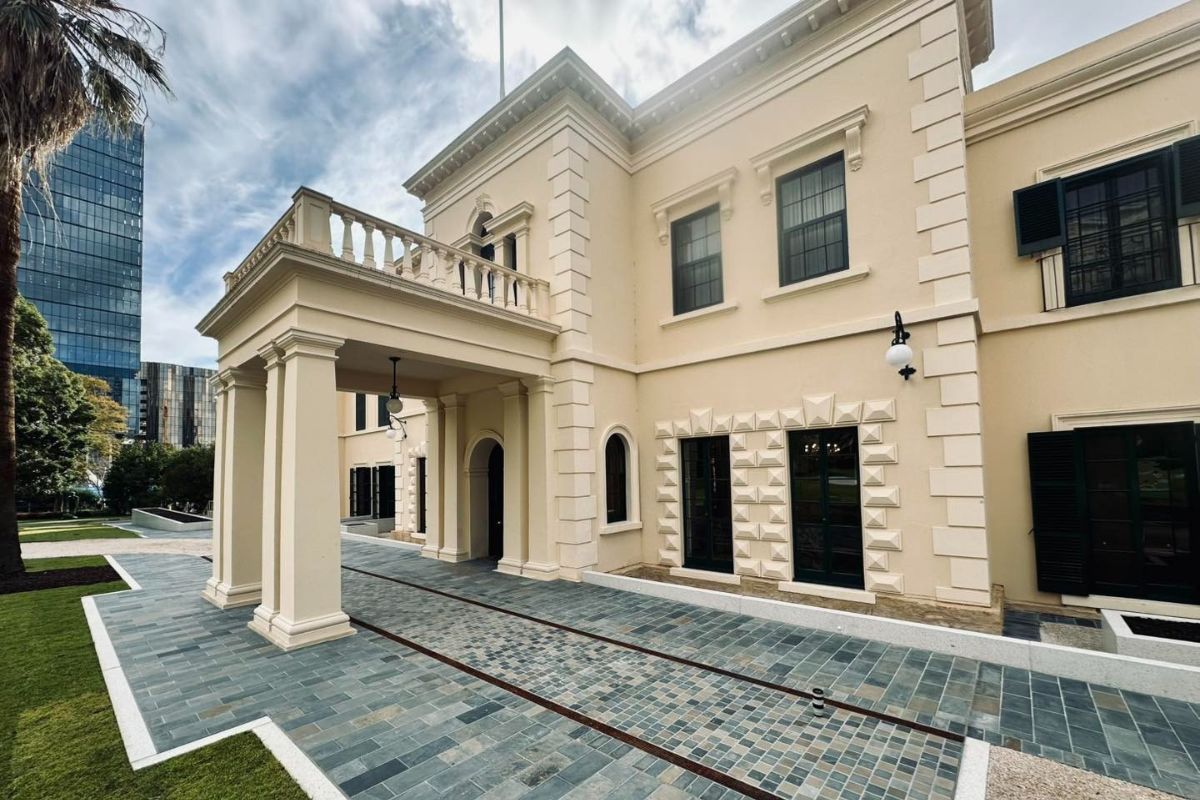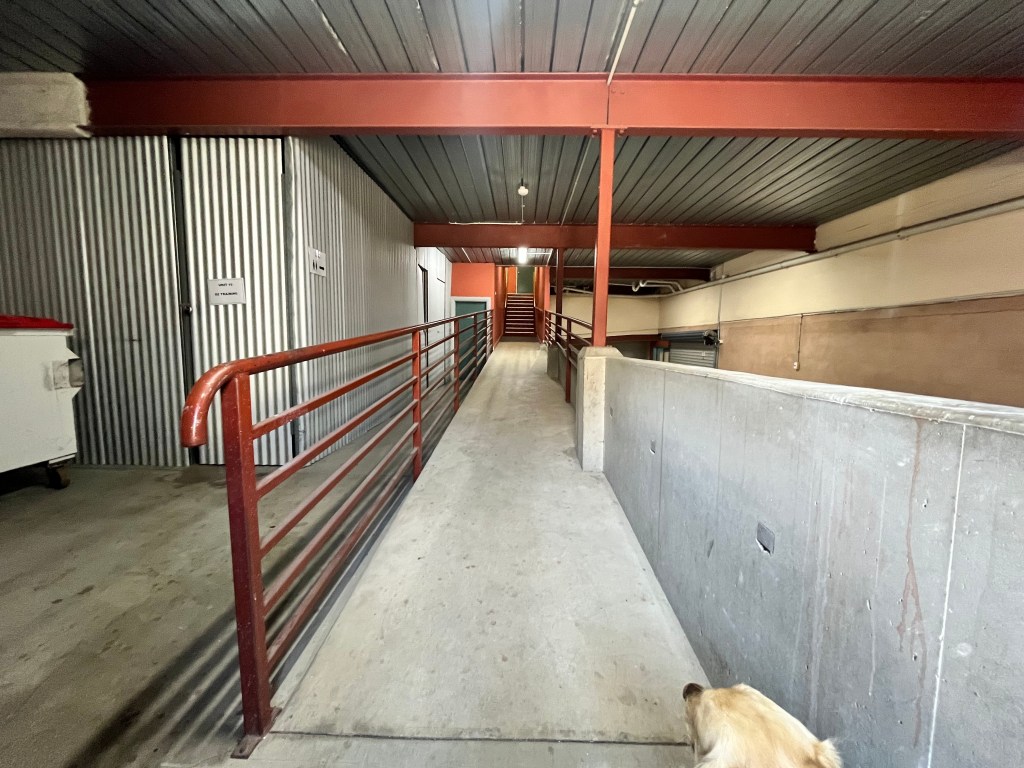Access win for SA’s oldest public building

The oldest public building in the state has made its entrance wheelchair accessible, and other publicly-owned buildings are being encouraged to follow suit.
When Shane Hryhorec visited Government House for a reception held for InDaily’s 2024 40 Under 40, he couldn’t enter through the main entrance with everyone else.
Though Shane had to wheel in through the east entrance, he was told this would soon change – and now it has.
“At that visit, I became aware that the Government House was about to undertake renovations, to take steps, to remove steps, to get into Government House,” Shane says.
The new entrance includes a gently graded walkway, ramps, rails, tactile indicators and improved lighting, and took several months to complete.

Governor of South Australia, Her Excellency the Honourable Frances Adamson AC, says they took “great care to preserve the heritage character of the building while incorporating modern accessibility features”.
“Although accessibility improvements have been made in other parts of the house and grounds, the State Entrance, the historic and symbolic ‘front door’, remained a barrier for some visitors due to the existing steps,” she says.
“This project was driven by the fundamental principle that everyone, whether a dignitary, award recipient, community member, or student, deserves the opportunity to enter through the same door.”
Shane says he “cannot speak more highly” of the Governor for being a leader in this space and “had goosebumps” wheeling through the front entrance for the first time.
You might like
“To know that I was one of the first two people to roll through the front entrance was quite a special moment for me and I had goosebumps all over,” Shane says.
“Just to think that for 150 years, people with disabilities had no choice but to come in through a side entrance and could now come in through the main door like everyone else, was a really significant moment for me.”
The main entryway is significant as it has seen Queen Elizabeth II and members of the royal family, along with premiers, diplomats and others walk through it in its over 150-year history.
The Governor says she and her husband Rod are committed to making Government House a “welcoming and inclusive place for all South Australians”.
“As a centre of governance and community, Government House should reflect the inclusive values South Australians uphold,” she says.
“When institutions take action on inclusion, they send a powerful message that everyone belongs and has the right to be part of civic life.”
Shane says he realised “if Government House, which is a 150-year-old building, can make an inclusive entry, then so many other buildings around Australia can easily do the same”.
“It sends a message to other historic buildings out there that you can find ways, look at plans and think about how that change can happen.”
Shane says he’d love to see all levels of government follow suit, including his local council, the City of Port Adelaide Enfield.
“It’s one thing for a private business owner to not have an accessible entrance, but it’s another thing for the council to own a building asset and not have an accessible entrance. That is not okay,” Shane says.
Shane says the Adelaide Business Hub on Todd Street in Port Adelaide is an example of a historic building owned by the council that could do with an access upgrade.
Subscribe for updates
“Its main entrance is not accessible, and then you need to wheel all the way around a block, like hundreds of meters to get through that back entrance, dodge cars, dodge bins, city footpaths,” he says.
“You have to go in through a dark garage and it’s the most underwhelming, depressing entry experience that you could experience.”

A spokesperson for Port Adelaide Enfield Council says they recognise the current wheelchair entrance to the business hub is “not ideal” and the site is on a list of buildings being audited.
The council says it recently released a tender to engage accessibility consultants to audit key buildings, including civic facilities, libraries, and community centres.
“While the Adelaide Business Hub is not included in the first tranche of buildings being audited – due to its recent lease arrangements and lower frequency of public use compared to other community assets – it will be considered in a future stage of the audit,” a spokesperson says.
“We acknowledge that the front entrance of the Adelaide Business Hub is not currently wheelchair accessible, though there is an accessible entry at the rear of the building. We recognise this is not ideal and are committed to addressing it as part of our broader accessibility planning.
“All newly constructed council assets are designed to meet DDA compliance standards, and we are working to ensure our heritage buildings are upgraded in a way that is both respectful and sustainable.”
The council says accessibility and inclusion are a priority for it, funding has already been allocated to upgrading assets in its recent budget, and it is working on a strategic ‘Inclusive Communities Plan’ that will soon be released for community consultation.
Though each council is responsible for identifying opportunities for improving access in its asset planning, the Local Government Association (LGA) has resources for councils and advocates for state and federal funding in this area.
A spokesperson for the SA branch of the Local Government Association (LGA) says many councils have already made accessibility changes to heritage buildings like town halls and civic centres by adding ramps, lifts, accessible toilets and entryways.
“Councils are committed to improving accessibility in community facilities and heritage buildings and are making steady progress through upgrades, adaptive design and community consultation,” the LGA spokesperson says.
“While heritage constraints and budget limitations can be hurdles, councils are making tangible progress to ensure public spaces are inclusive for all.”
Shane says he’d like to see more funding flow to these areas alongside legislative change to help businesses and heritage buildings become accessible for people with disabilities.
“A lot of people do want to make the change to become accessible, but when you’re a small business and you’re barely scraping by …because of the cost-of-living challenges, then it’d be amazing to see our state and federal government step in and pay grants to be able to make buildings and businesses more accessible and inclusive.
“What we’ve learned from this experience, from Her Excellency, is that when you have care and compassion, you can remove steps, and when you do remove steps, it is huge towards showing that you’re inclusive and making sure that everyone is included in society.
“I would love to see councils follow suit.”





